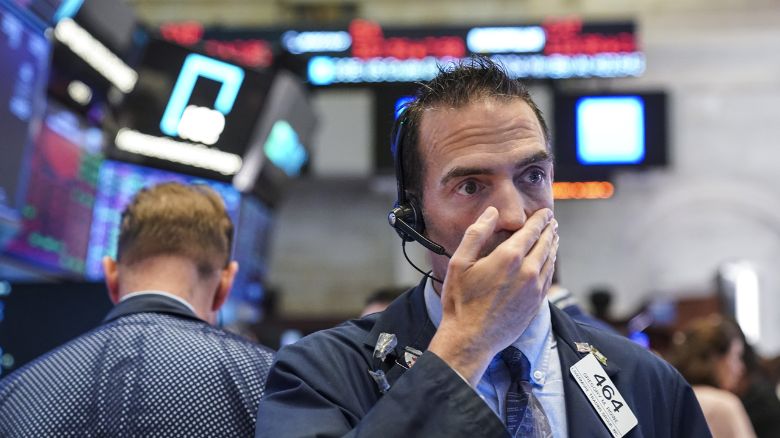
Markets and Economy Three issues that could keep global markets reeling
Assessing the Brexit aftermath, the Iowa caucus, coronavirus fears, and economic data

In last week’s blog, I noted that what I would be following most closely that week was the release of the Federal Reserve’s Monetary Policy Report, because it provides insight on what the Fed is thinking. On Friday, the Fed released this semi-annual report in advance of Fed Chair Jay Powell’s Humphrey-Hawkins testimony before Congress on Feb. 11 and 12. As is customary, several special topics were covered in the report. Below, we focus on three key takeaways: US manufacturing, the role of monetary policy rules in times of uncertainty, and the coronavirus epidemic.
Because of the drop in US manufacturing output last year, and concerns that it could spill over to the rest of the economy, the Fed chose to explore the topic of manufacturing and its relationship with business cycles.
The Fed recognized that 2019’s manufacturing weakness was the result of several different factors, including the trade wars. It concluded that the manufacturing downturn was relatively mild and would have to be more significant in order to spill over into other parts of the economy. It also recognized that modest manufacturing downturns have historically occurred during economic expansions.
However, in its analysis I believe the Fed overlooked the powerful role it and other central banks played last year in mitigating the damage of the trade wars on the manufacturing sector, and therefore the overall economy. The relatively modest downturn in manufacturing was a result of policy intervention — and that, to me, is the key takeaway.
Another special topic in the Monetary Policy Report focused on monetary policy rules and their role in times of uncertainty. The Fed provided a brief background of these rules — for example, the Taylor rule, which suggests that the Fed should raise interest rates when inflation and employment are high, and cut rates when inflation and employment levels are low.
The Fed recognized that the policy prescriptions derived from these monetary policy rules are dependent on factors such as the longer-run neutral real interest rate, which can change (likely moving lower). The key takeaway from this exploration is that the Fed does not want to rely on rules-based monetary policy when there is uncertainty around key assumptions that impact the rules. This stance supports what the Fed did last year in terms of providing three “insurance” rate cuts that weren’t called for based on a strict mechanical adherence to these rules.
The Monetary Policy Report also reminded us that the Fed is undertaking a strategic review of its monetary policy tools and communications practices, with an eye toward its dual mandate of promoting both stable prices and maximum sustainable employment. As explained in the report: “The review is considering what monetary policy strategy will best enable the Federal Reserve to meet its dual mandate in the future, whether the existing monetary policy tools are sufficient to achieve and maintain the dual mandate, and how communication about monetary policy can be improved.”
It is interesting that the European Central Bank (ECB) is also undergoing a strategic review of its policy tools this year. I am eager to see the conclusions drawn by these two central banks – I suspect it may drive at least the ECB toward more experimental monetary policy tools.
However, what got the greatest attention in the Monetary Policy Report was a brief nod to the potential of the coronavirus to negatively impact the global economy: “The recent emergence of the coronavirus could lead to disruptions in China that spill over to other Asian countries and, more generally, to the rest of the global economy.” The fact that the Fed viewed this contagion as significant enough to reference in its semi-annual report seemed to contribute to the anxiety around the coronavirus last Friday, sending US stocks and yields on US Treasuries down.
But it’s not just the Fed. White House economic adviser Larry Kudlow warned that the coronavirus contagion would delay the increase in US exports to China that was expected as part of the Phase 1 trade deal — although he and Chinese President Xi Jinping continue to believe China will be able to meet its quotas by the end of 2020.
ECB President Christine Lagarde has also recognized the potential risks presented by the coronavirus, “While the threat of a trade war between the United States and China appears to have receded, the coronavirus adds a new layer of uncertainty.”1 In my view, Lagarde’s comments are spot on. It seems that the coronavirus is replacing the US-China tariff war as the main source of uncertainty for at least the early part of 2020.
There are a lot of similarities between these two sources of uncertainty, not the least of which is that their epicenter is China, and their impact is likely to be felt in the global economy. Economist Chris Williamson of IHS Markit explained, “The Wuhan coronavirus meanwhile represents a new potential disruptor to business and trade. We consequently expect the eurozone to avoid recession in 2020 but to struggle to muster growth of 1.0%.”2 Bank of Canada Senior Deputy Governor Carolyn Wilkins suggested that the Bank of Canada is on high alert, recognizing that the coronavirus could negatively impact the Canadian economy by disrupting supply chains and depressing oil prices.
However, despite concerns about the contagion, there is a recognition that this is likely to be a very short-term problem — which is what differentiates it from the US-China tariff war, where there was really no end in sight for a long time. And that may be why there has been a more positive reaction to policy support. When Chinese stocks opened last week after the Lunar New Year, they sank 7.7% on Monday, Feb. 3 — but then recovered significantly by the week’s end to finish down a more modest 3.4%.3 All this government intervention is making a difference.
Last week reminded us of the awesome powers of government institutions such as the Federal Reserve, the European Central Bank and the People’s Bank of China. They continue to have powerful policy tools at their disposal, which they have used to mitigate the damage caused by trade wars — and may also use against the coronavirus (the PBOC is already doing so). And many central banks are disciplined in assessing their policy tools and evaluating their monetary policy strategy. And so, while headlines are likely to get worse, I continue to believe that investors should not allow panic to impact their investing decisions. Monetary policy should continue to be supportive of risk assets, especially stocks, despite the potential for higher volatility.

Assessing the Brexit aftermath, the Iowa caucus, coronavirus fears, and economic data

Last week, the US and China signed their Phase 1 trade agreement. This trade deal is a paradox — in my view, it is both inconsequential and yet extremely important.